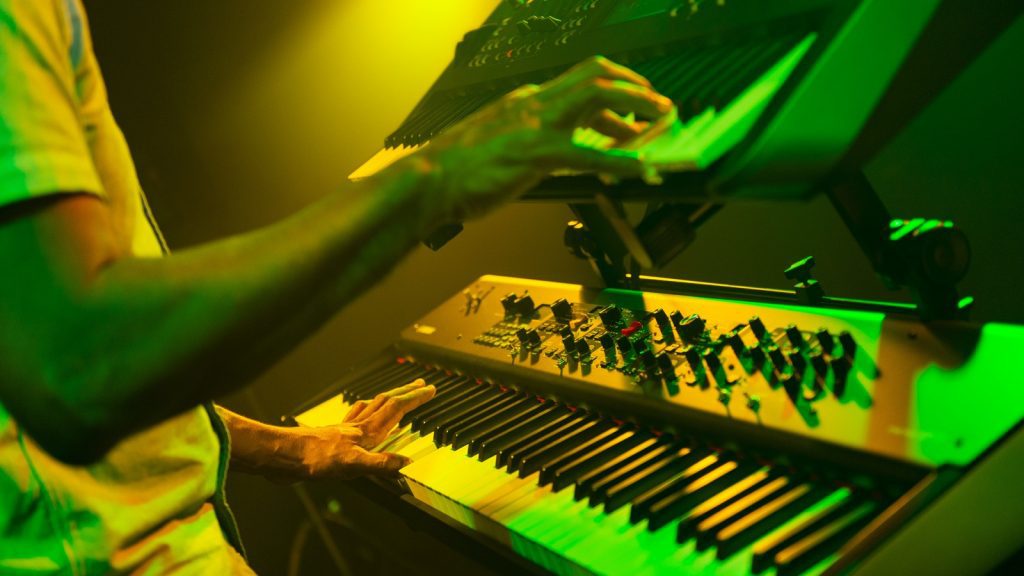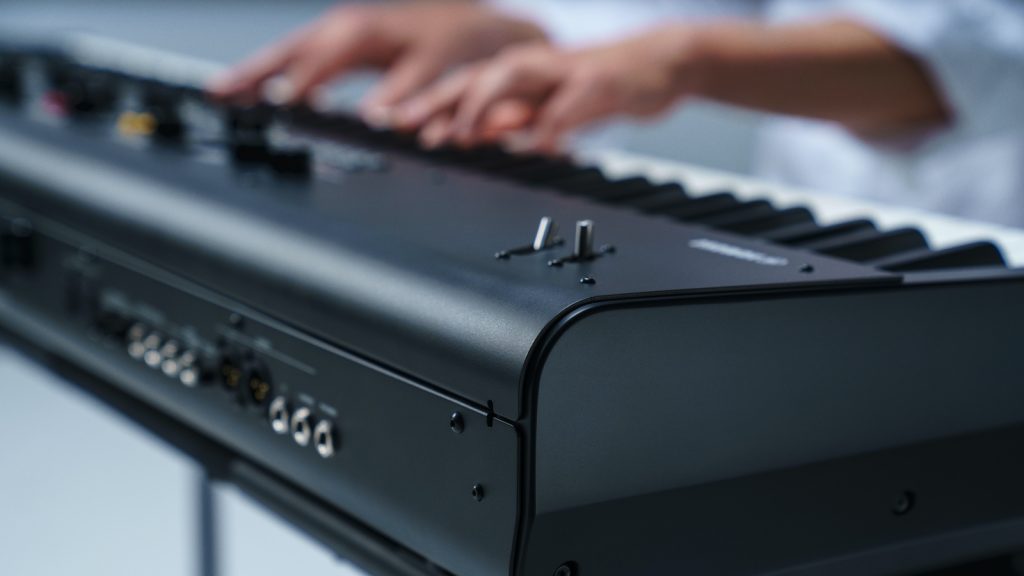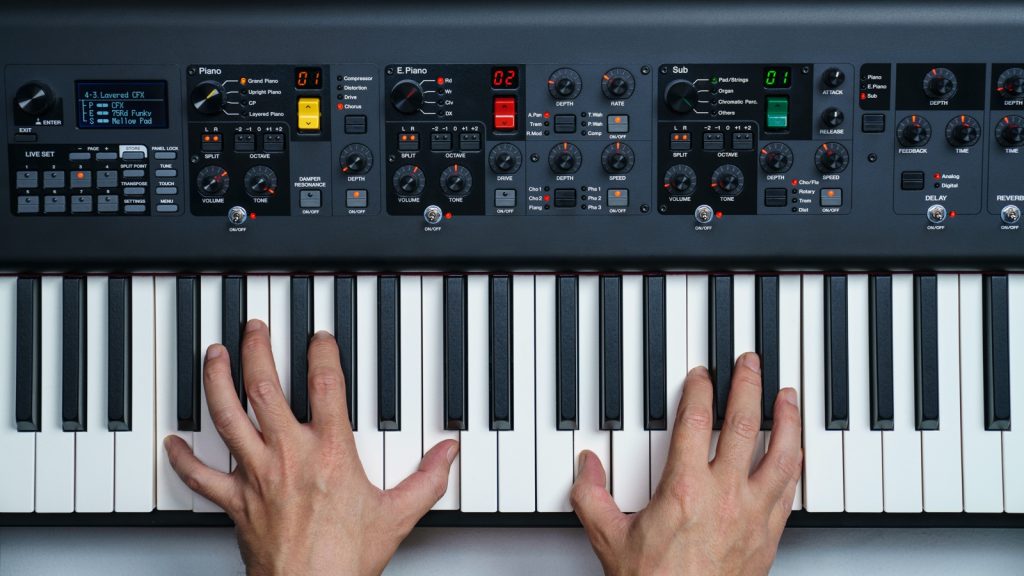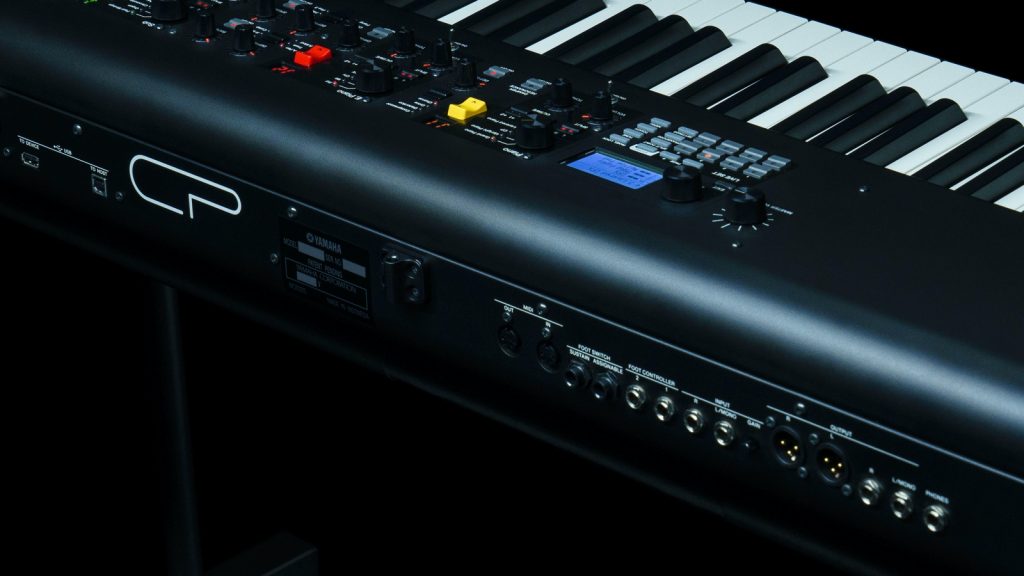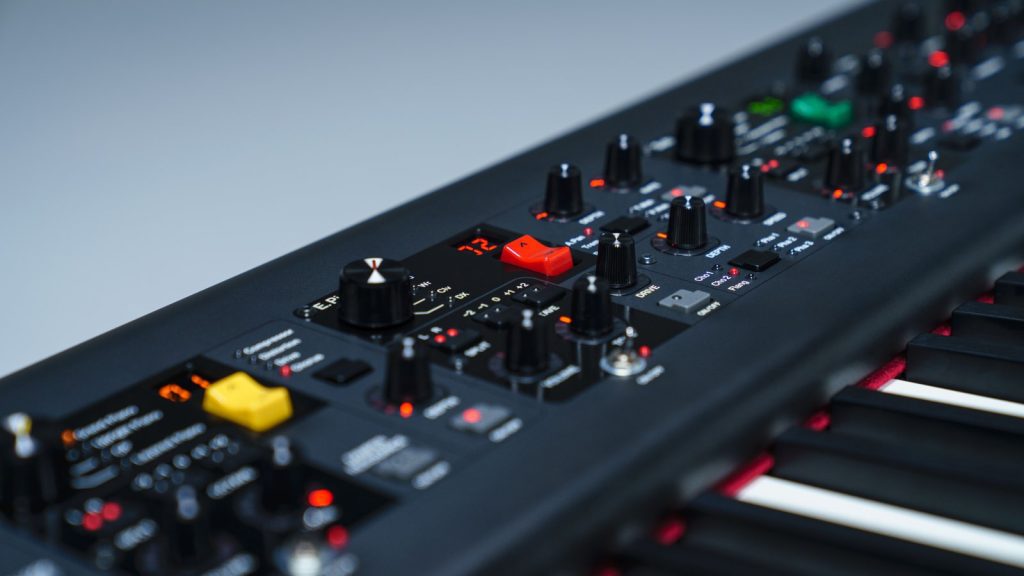Compared to the clean design of previous models, the colorful vintage elements make the control panel almost playful. Still, it is a cool mix that looks modern and iconic at the same time. Bright yellow, green, and red rocker-style preset buttons are especially eye-catching in both shape and color. The toggle switches accentuate this look. In addition, the Yamaha CP88 features LED rings around all relevant controls for optimal visibility in low-light environments.
In the case of the CP88, putting “stage” before “piano” is not just marketing, it is a promise. While the CP4 Stage was made of lightweight plastic, the CP88 is a robust stage piano in a metal casing. The CP88 is built to a very high standard, which is reflected in both the feel and the ratio of the actual weight of 18.6 kg to the solid construction of the cabinet.
As an alternative to the CP88, Yamaha offers the smaller CP73, which is technically identical to the larger model. The only difference is the 73-key “Balanced Hammer Standard” (BHS) keyboard and the resulting differences in dimensions.

